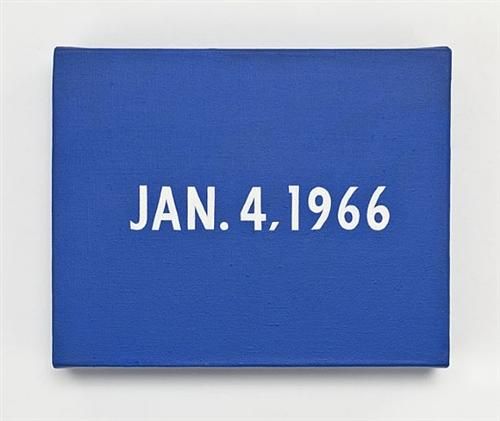
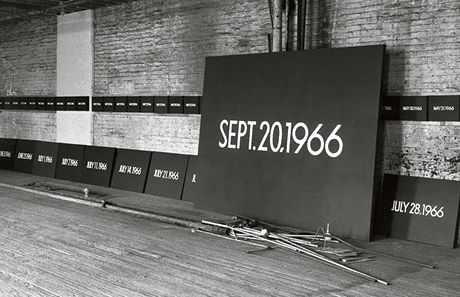

On Kawara (1932 – 2014) è un artista concettuale di origine giapponese che ha lavorato a New York, dove, dal 4 gennaio 1966, ha dipinto quasi ogni giorno, per i successivi 46 anni, piccoli quadri il cui soggetto è la data di realizzazione dell’opera. La data è anche il titolo del date painting, il quale doveva essere teminato entro la mezzanotte, se così non era veniva distrutto. A volte ne realizzava più di uno in una stessa giornata. Il formato era sempre rettangolare, scelto tra otto misure standard, il colore era preparato artigianalmente, diverso e unico per ogni tela. La data, composta rispettando il formato in uso nel paese in cui veniva dipinta (l’Esperanto era usato quando la lingua del paese corrente non usava l’alfabeto romano), era tracciata a mano. Quando non veniva esposto, ogni dipinto era custodito in una scatola di cartone etichettata, costruita su misura dall’artista, foderata con un ritaglio di un quotidiano del giorno in questione.
I sottotitoli delle opere sono frasi tratte da questi frammento di giornale. Oggi i dipinti della Today Series sono quasi tremila.
On kawara (1932 – 2014) is a japanese conceptual artist who worked in New York, where, from 4 January 1966, he painted almost every day, for the next 46 years, small paintings whose subject is the date of realization of the work. The date is also the title of the date painting, which had to be ended by midnight, if it was not it was destroyed.Sometimes he made more than one in a same day. The format was always rectangular, chosen from eight standard sizes, the color was handmade, different and unique for each canvas. The date, composed following the format used in the country in which it was painted (the Esperanto language was used when the current country did not use the Roman alphabet), was drawn by hand. When them were not exhibited, the paintings was placed in a cardboard box labeled, custom-made by the artist, which is lined with a clipping from a local newspaper from the city in which the artist made the painting.
The subtitles of the works are phrases taken from these fragment of paper. Nowadays the paintings of Today Series are almost three thousand.
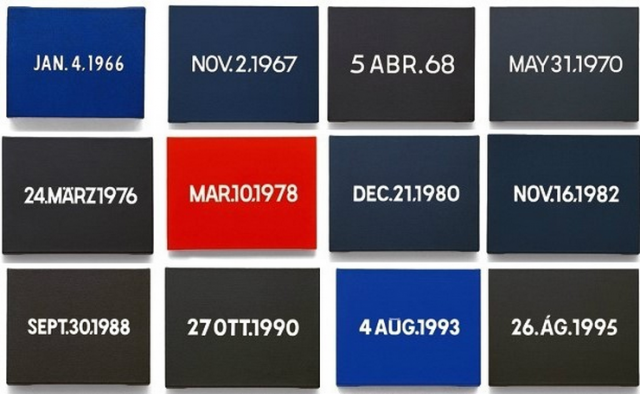
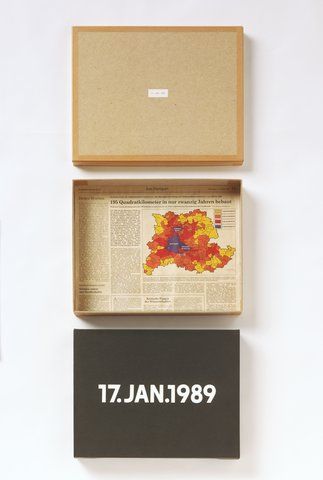
Con i date paintings la dimensione temporale diventa l’elemento fondamentale dell’opera, un tempo che non è solo quello personale dell’artista, ma che diventa tempo storico nel momento in cui testimonia date passate alla storia – come JULY 16, 1969, JULY 20, 1969 e JULY 21, 1969 dipinti nei giorni del primo sbarco sulla luna – avvalendosi anche dell’ausilio degli articoli di giornali, che rendono meno oggettive le asettiche tele.
With dates paintings the time dimension becomes the main element of the work, a time that is not only the artist’s one, but becomes historical time when it testifies dates went down in history – as JULY 16, 1969 JULY 20, 1969 JULY 21, 1969 painted in the days of the first moon landing – making use of the assistance of newspaper articles too, making aseptic paintings less objective.
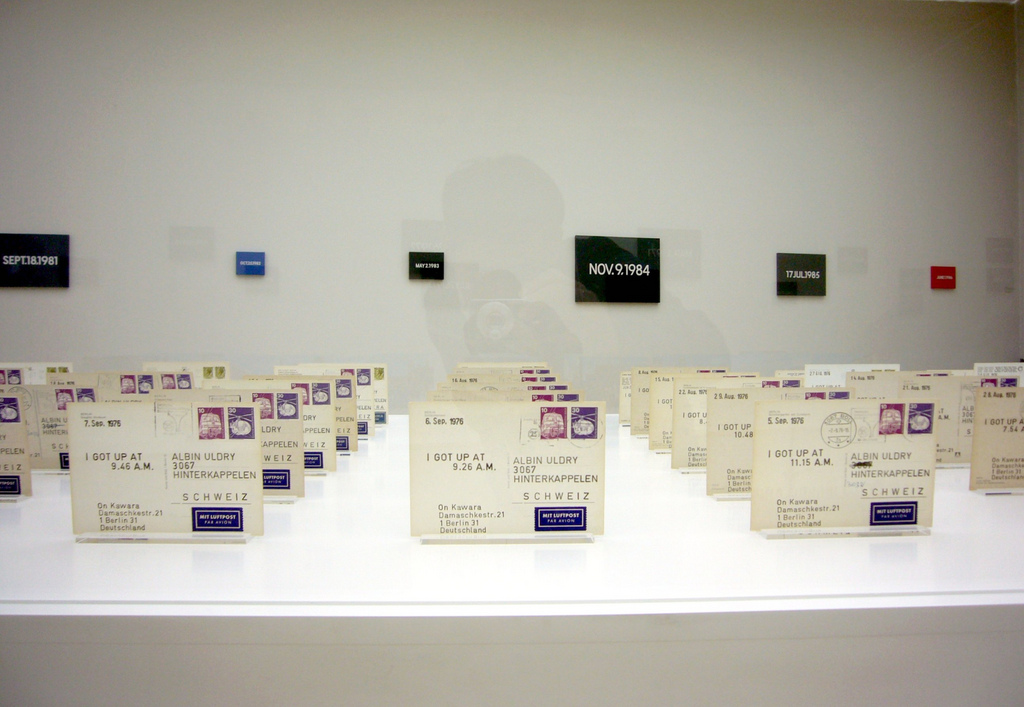
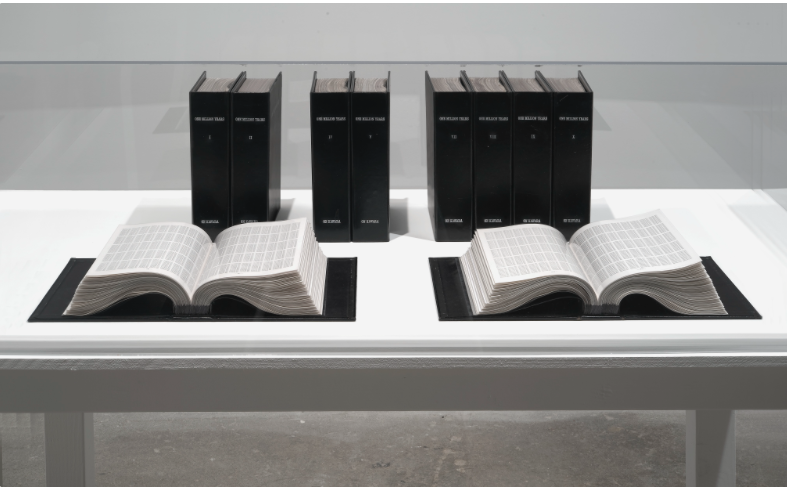
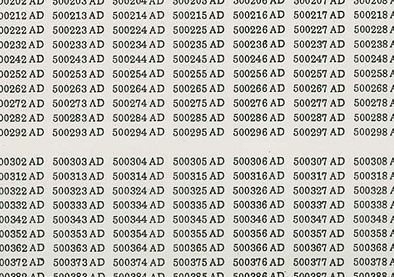
L’interesse di On Kawara per il tempo è presente in tutte le sue opere, passando dai telegrammi con la scritta “I am still alive” (“sono ancora vivo”) fino a One Million Years.
Quest’ultima opera, iniziata dall’artista nel 1969, documenta il passare del tempo cronologico, riportando l’elenco dattiloscritto degli anni dal passato al futuro, con venti volumi che contengono 2.068 pagine l’uno: Past è dedicato a “all those who have lived and died” (“tutti coloro che sono vissuti e morti”) e Future è “for the last one” (“per l’ultimo”).
The interest of On Kawara for the time is present in all his works, passing by telegram with the written “I am still alive” to One Million Years.
This last work, begun by the artist in 1969, documents the passage of chronological time, bringing the typewritten list of the years from past to future, with twenty volumes that contain 2,068 pages each: the Past is dedicated to “All Those who have lived and died” and Future is “for the last one“.
Photo credits and more infos on: theguardian.com and phaidon.com